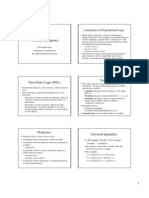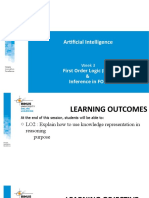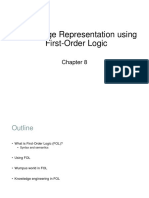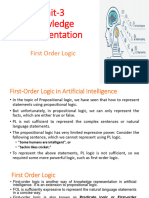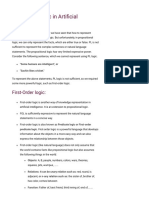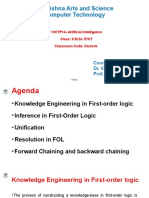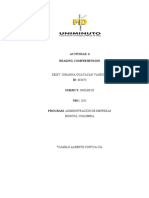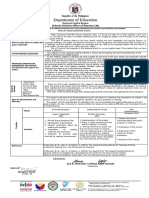0% found this document useful (0 votes)
56 views19 pagesPropositional Logic and First Order Logic
The document discusses Propositional Logic (PL) and First-Order Logic (FOL) as foundational concepts in Artificial Intelligence (AI). PL is limited in expressing complex relationships, while FOL enhances expressiveness with quantifiers and predicates, enabling better knowledge representation and reasoning. Additionally, it covers the process of unification in FOL, which is essential for matching logical expressions in automated reasoning.
Uploaded by
fatin927870Copyright
© © All Rights Reserved
We take content rights seriously. If you suspect this is your content, claim it here.
Available Formats
Download as PPTX, PDF, TXT or read online on Scribd
0% found this document useful (0 votes)
56 views19 pagesPropositional Logic and First Order Logic
The document discusses Propositional Logic (PL) and First-Order Logic (FOL) as foundational concepts in Artificial Intelligence (AI). PL is limited in expressing complex relationships, while FOL enhances expressiveness with quantifiers and predicates, enabling better knowledge representation and reasoning. Additionally, it covers the process of unification in FOL, which is essential for matching logical expressions in automated reasoning.
Uploaded by
fatin927870Copyright
© © All Rights Reserved
We take content rights seriously. If you suspect this is your content, claim it here.
Available Formats
Download as PPTX, PDF, TXT or read online on Scribd
/ 19













